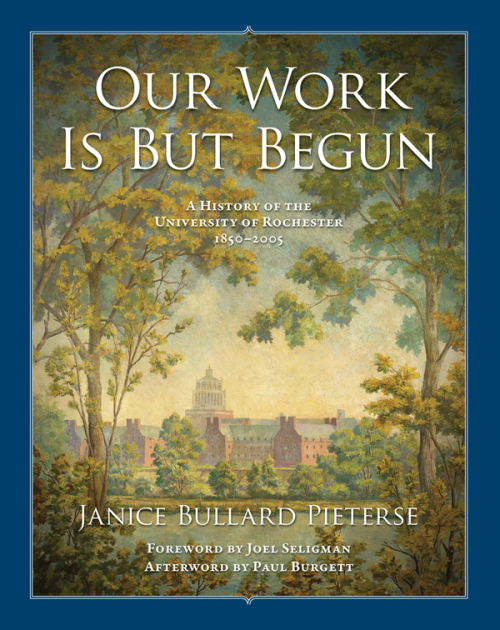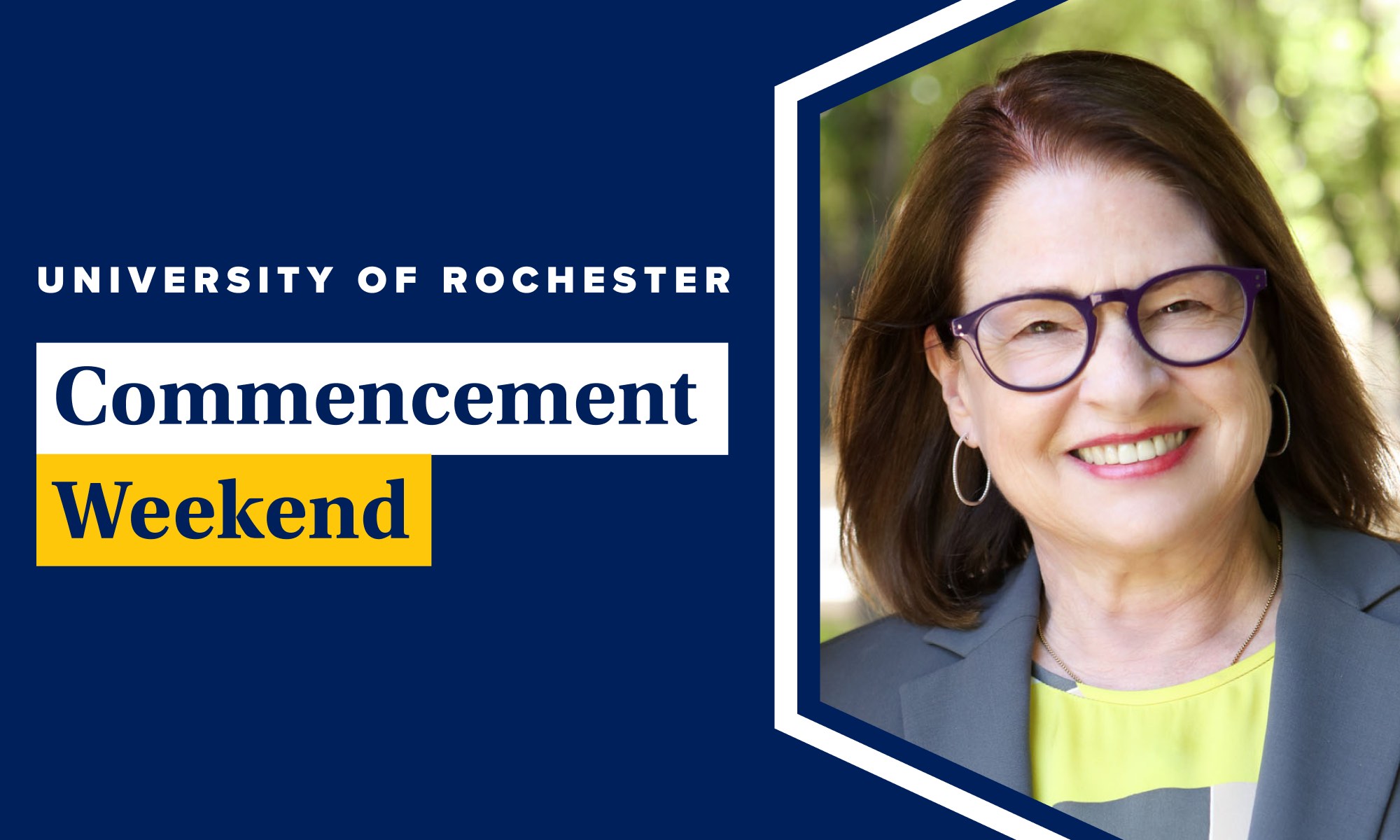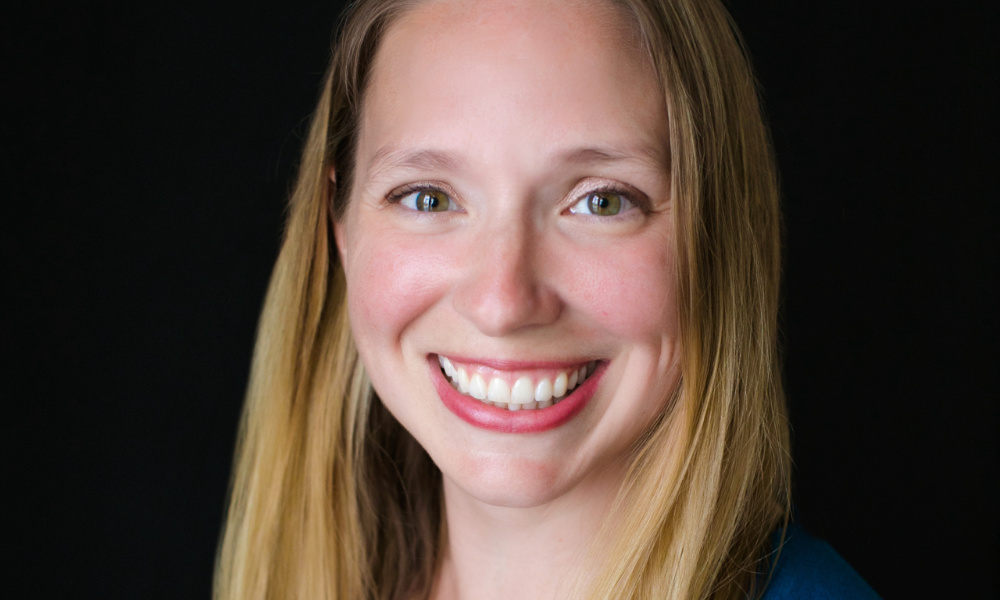 A rich new history traces the growth of the University of Rochester from a small undergraduate program in 1850 to a leading research university and engine for economic growth in 2005.
A rich new history traces the growth of the University of Rochester from a small undergraduate program in 1850 to a leading research university and engine for economic growth in 2005.
Author Janice Bullard Pieterse also chronicles the University’s deep ties to its hometown, from the young school’s relationship with benefactor George Eastman to its current position as a major employer and health care provider. And Pieterse places the institution’s evolution in the broader context of American higher education over the past century and a half.
With a foreword by University President Joel Seligman and an afterword by Paul Burgett, University vice president and senior advisor to the president, Our Work Is But Begun: A History of the University of Rochester, 1850–2005 will be of interest to historians, alumni, and friends of Rochester. Published by the University of Rochester Press, the history is scheduled for publication Oct.18.
Highlights from the book’s narrative and many sidebars and profiles include:
Curricular innovation: From the beginning, Rochester offered two educational tracks—one following the traditional bachelor of arts curriculum focused on classical studies; the other granting a bachelor of science that omitted the study of Greek or Latin, a radical departure in the mid-19th century that met the growing need for secular training.
Women at the University: Several women’s societies lobbied the University to admit women by the mid-1880s and faculty overwhelmingly supported the idea. University President David Jayne Hill, whose wife had given birth to twins, a boy and a girl, was said to observe “if the Creator could risk placing sexes in such near relations, he thought they might with safety walk on the same campus and pursue the same curriculum together.” Ultimately, the trustees agreed to admit women if $50,000 could be raised toward the goal. When the fundraising fell short, Susan B. Anthony famously pledged her life insurance, allowing 33 women to matriculate in 1900. In 1946, English professor Kathrine Koller became the first woman to chair a major discipline. Today, half of undergraduates are female.
Early sports: President Hill also encouraged athletics, calling them “a hundred times more effective against rowdyism and barbarism than protractors and informers.” Rochester’s first intercollegiate football game in 1889 ended in defeat by Cornell, 106-0, but later in the season the team shut out Syracuse 36-0. Nearly a century later in 1986, the women’s soccer team would go on to win the NCAA Division III National Championship.
The Eastman legacy: Kodak’s self-made founder was initially a reluctant supporter of higher education. After his first major gift of $10,000 for a physics and biology building, Eastman warned, “This is the last I shall do for the university.” Eventually, the industrialist helped create the medical school, Eastman School of Music, and the dental clinic—now the Eastman Institute for Oral Health. On his death, Eastman endowed the University with the bulk of his remaining estate, believed to be at the time the largest single bequest given to an American university. His gifts to the university over three decades were estimated at $51 million—roughly $800 million by today’s standards.
Graduate education: The University awarded its first graduate degree in 1925, and embarked on an era of expansion in both graduate and undergraduate education in the 1960s and early 1970s. Graduate study would be a priority, President Allen Wallis said, noting that more students earned master’s degrees in 1962 than bachelor’s in 1920. Today graduate students represent 44 percent of Rochester’s student body.
Our Work Is But Begun is available to pre-order from the University of Rochester Press at http://www.urpress.com/store/viewItem.asp?idProduct=14651.



